In the world of culinary appliances, contact grills have become a staple for both home chefs and commercial kitchens alike. These versatile cooking tools offer a quick and efficient way to achieve that perfect sear on meats and vegetables. As the demand for high-quality grilling solutions continues to rise, the role of Original Equipment Manufacturers (OEMs) in the contact grill industry cannot be overstated. Today, we delve into the world of contact grill OEMs, exploring their significance, the process of collaboration, and the transformative impact they can have on your business.
Understanding Contact Grill OEM: What It Is and Why It Matters
In the world of outdoor cooking, the contact grill has emerged as a favorite among grill enthusiasts and chefs alike. But what is it about these grills that has captured such attention, and how does the concept of OEM (Original Equipment Manufacturer) play a role in their popularity? Let’s delve into the intricacies of contact grill OEMs and why they matter in today’s market.
Contact grills, also known as countertop grills or flat-top grills, are designed to cook food on a flat surface using even heat distribution. They are compact, easy to use, and perfect for cooking a variety of meats, vegetables, and even pancakes. The key to their success lies in their ability to provide a consistent cooking experience, which is where OEMs come into play.
An OEM, or Original Equipment Manufacturer, is a company that produces goods or components that are then used by another company as part of a final product. In the context of contact grills, an OEM might design and produce the heating elements, grill plates, and other components that are then integrated into the final grill product by a brand or retailer.
Now, let’s explore why understanding contact grill OEMs is crucial to the market’s dynamics:
Customization and Quality ControlWhen a company opts to work with an OEM, it gains the ability to customize the design and specifications of the grill components. This can lead to a product that is tailored to the specific needs of the end consumer, whether that’s a focus on durability, ease of use, or advanced cooking features. OEMs also ensure strict quality control throughout the manufacturing process, which is essential for maintaining the brand’s reputation.
Cost EfficiencyFor many brands, working with an OEM can be a cost-effective strategy. By outsourcing the production of certain components, companies can reduce overhead and focus on other aspects of their business, such as marketing and customer service. This cost efficiency can often be passed on to the consumer, making high-quality contact grills more accessible.
Innovation and DevelopmentOEMs are often at the forefront of innovation in the grill industry. They have the resources and expertise to develop new technologies and materials that can enhance the performance and longevity of contact grills. This means that brands can offer cutting-edge products to their customers without having to invest heavily in research and development.
Flexibility and ScalabilityThe relationship between a brand and an OEM can provide flexibility in terms of production volume and speed. As demand fluctuates, an OEM can quickly adjust production to meet the needs of the market. This scalability is particularly important for brands that want to expand their product lines or enter new markets.
Market DifferentiationBrands that partner with reputable OEMs can differentiate themselves in a crowded market. By offering a unique, high-quality product that stands out from competitors, these brands can attract a loyal customer base. The quality and reliability of the OEM components are often a key factor in this differentiation.
Sustainability and Environmental ResponsibilityOEMs are increasingly focused on sustainability and environmental responsibility. By working with these manufacturers, brands can ensure that their products are produced in an eco-friendly manner, using sustainable materials and energy-efficient processes. This commitment to sustainability can appeal to consumers who are increasingly conscious of their environmental impact.
The Role of DistributionOEMs often have established distribution networks that can streamline the process of getting contact grills to market. This can be particularly beneficial for brands that are looking to expand their distribution channels or enter new regions.
In conclusion, the concept of contact grill OEMs is integral to the success of the industry. By providing customized, cost-effective, and innovative solutions, OEMs enable brands to deliver high-quality products to consumers. As the demand for contact grills continues to grow, the role of OEMs in driving innovation and meeting market needs will only become more significant. Whether you’re a consumer looking for the perfect grill or a brand seeking to enter the market, understanding the importance of contact grill OEMs is a crucial step in making informed decisions.
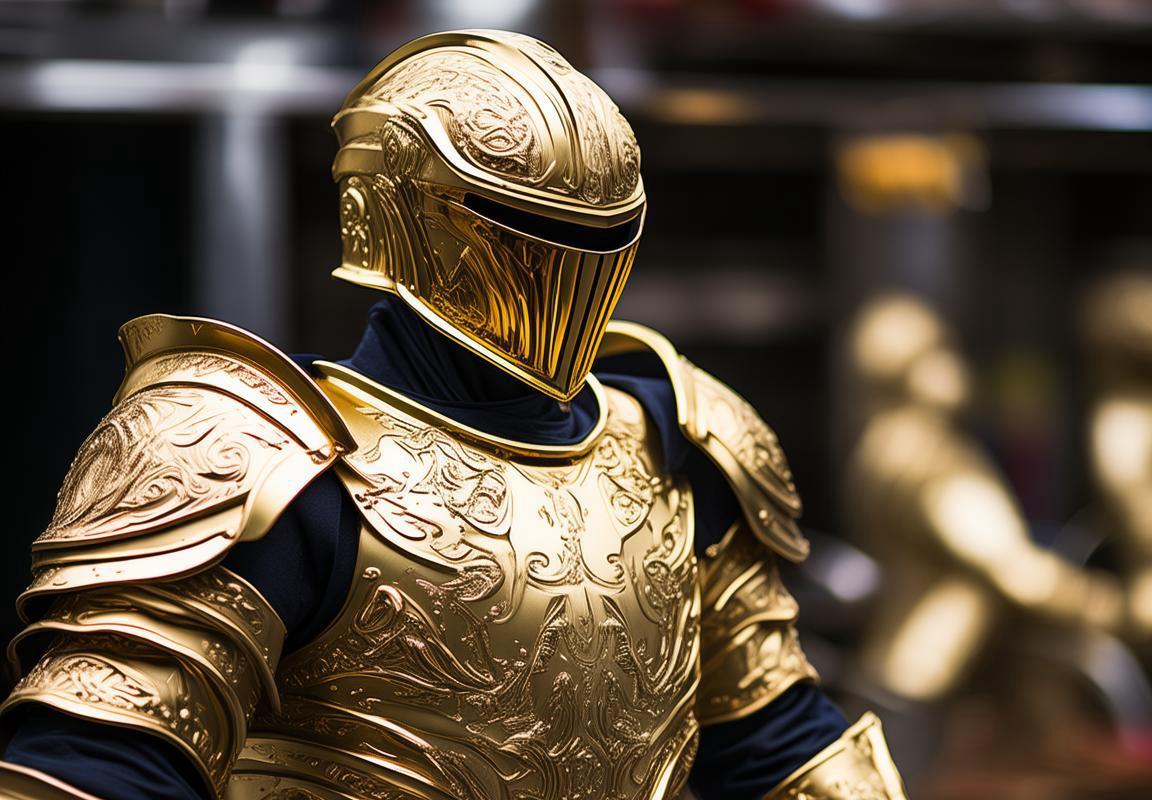
The Basics of Contact Grills: A Quick Overview
Contact grills, often affectionately known as “griddlers,” have become a staple in many kitchens for their ability to cook a variety of foods with ease. These compact cooking appliances are designed to cook food by pressing it between two heated plates, which are typically made of cast iron or non-stick materials. Here’s a quick overview of the basics of contact grills.
The primary feature of a contact grill is its flat, grill-like surface that can be found in various sizes, from small countertop models to larger, commercial-grade units. These surfaces are where the magic happens, allowing for direct heat transfer to the food, which results in those beautiful grill marks and a perfectly cooked texture.
One of the standout benefits of contact grills is their versatility. They can be used to cook everything from sandwiches and burgers to vegetables, fish, and even pancakes. The even distribution of heat ensures that the food is cooked thoroughly without burning, making them a favorite among busy home cooks and food enthusiasts alike.
The heating elements in contact grills are typically located beneath the cooking surface, and they can reach high temperatures quickly, often in just a few minutes. This rapid heating is one of the reasons why contact grills are so efficient. They can cook meals faster than traditional grills or stovetop cooking methods, which is particularly appealing during busy weekdays or when you’re short on time.
The design of contact grills often includes a hinge that allows the top plate to close, effectively sealing in the heat and steam. This not only helps to cook the food more quickly but also adds a level of moisture that can tenderize meats and add a succulent flavor to vegetables. The hinge mechanism also serves as a safety feature, preventing accidental burns or spills.
Many contact grills come with additional features that enhance their functionality. Some models include a drip tray to catch any excess fat or juices, which can be removed and cleaned easily. Others have adjustable temperature controls, allowing users to cook at different heat levels for various types of food. Some even have a built-in timer to remind you when your food is ready.
One of the most notable aspects of contact grills is their ease of use. They are typically lightweight and portable, making them a great addition to any kitchen. The non-stick surfaces make them simple to clean, and many models can be wiped down with a damp cloth or placed in the dishwasher for a thorough cleaning.
Contact grills also come in various styles, from the classic flat-top design to those with ridges that mimic the look of a traditional grill. The ridged models are great for those who want to achieve that classic grill mark look without the mess of an outdoor grill.
In terms of maintenance, contact grills are relatively low-maintenance. Regularly cleaning the cooking surface and ensuring that the hinge mechanism is well-lubricated will keep your grill in top condition for years to come.
When it comes to price, contact grills range from budget-friendly options to high-end models with advanced features. Whether you’re looking for a simple, no-frills grill for casual use or a premium unit with all the bells and whistles, there’s a contact grill out there to fit your needs and budget.
In conclusion, contact grills are a fantastic kitchen tool that offers a combination of convenience, speed, and versatility. Whether you’re a seasoned grill master or a beginner looking to expand your culinary skills, a contact grill can be a valuable addition to your kitchen arsenal. From sandwiches to seafood, these versatile appliances can help you create a wide array of delicious meals with minimal effort.
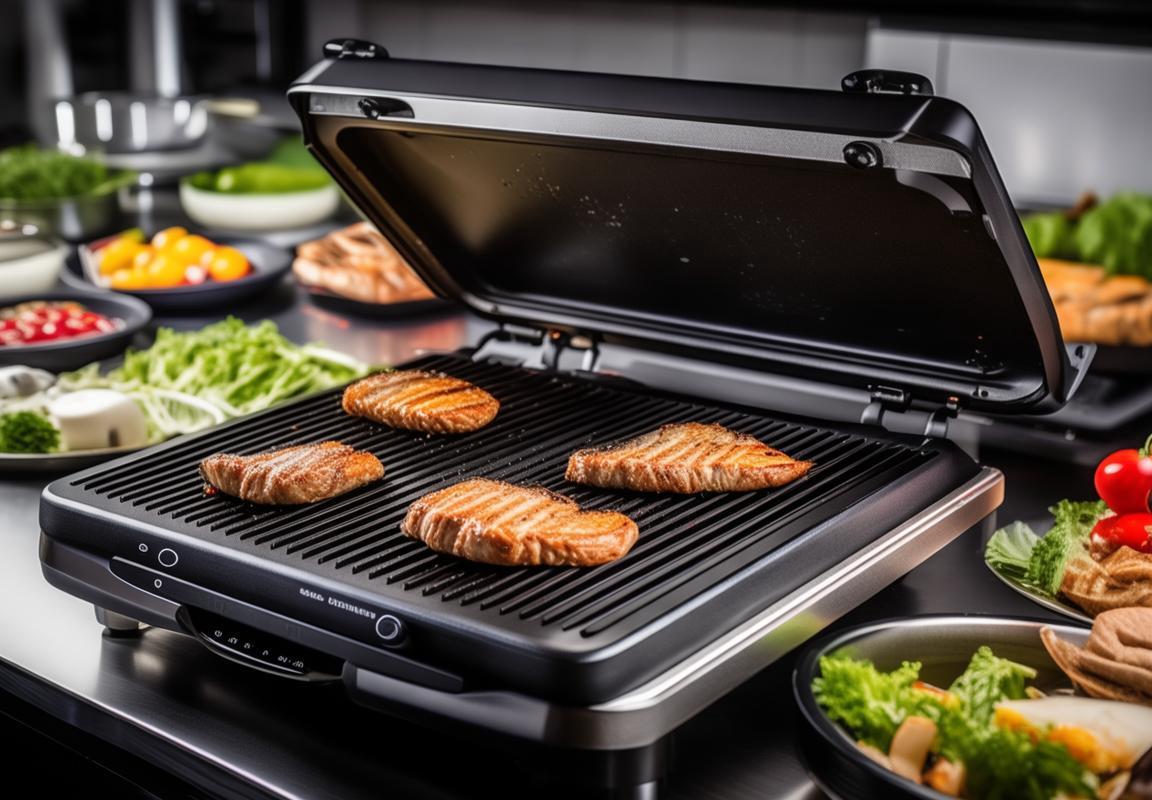
What is OEM in the Context of Contact Grills?
OEM, or Original Equipment Manufacturer, is a term that holds significant importance in the world of contact grills. It refers to a company that produces goods, often under a different brand name, for another company. In the context of contact grills, this means that while the final product may bear the name of a well-known brand, the actual manufacturing is done by an OEM. Let’s delve deeper into what this entails.
The concept of OEM is rooted in the idea of customization and efficiency. When a brand decides to outsource the manufacturing of a product like a contact grill, they are essentially leveraging the expertise and capabilities of an OEM to produce a high-quality item that meets their specific standards. This collaboration allows the brand to focus on marketing, design, and innovation, while the OEM handles the nuts and bolts of production.
An OEM contact grill is characterized by several key elements. First and foremost, the design of the grill is developed by the brand, which ensures that it aligns with their aesthetic and functional requirements. The OEM then takes this design and translates it into a physical product. This includes selecting the appropriate materials, such as stainless steel or cast aluminum, for the grill’s construction.
One of the most crucial aspects of OEM contact grills is the build quality. The manufacturing process must be precise and consistent to ensure that each grill functions as intended. This involves the use of advanced machinery and skilled labor to assemble the grill, which may include components like heating elements, grill plates, and electronic controls. The end result is a product that not only looks impressive but also performs reliably.
Another important consideration in the OEM process is the ability to scale production. Brands often look for OEM partners who can produce large quantities of contact grills efficiently. This scalability is essential for meeting market demands and keeping up with trends. The OEM must have the infrastructure, such as factories and supply chains, to handle this level of production without compromising on quality.
Customization is also a key aspect of OEM contact grills. While the basic design is set by the brand, the OEM can offer various options for customization. This might include different sizes, additional features, or even the use of specialized materials. Brands may choose to offer a range of models to cater to different market segments, and the OEM’s ability to accommodate these variations is crucial.
Quality control is another area where the OEM plays a pivotal role. The manufacturing process must include rigorous testing at various stages to ensure that each contact grill meets the brand’s high standards. This might involve checking for proper heat distribution, ensuring that the grill plates are correctly aligned, and verifying that all electronic components function as intended.
In addition to the physical aspects of manufacturing, OEMs often provide logistical support. This can include packaging the contact grills for shipping, coordinating with distributors, and even offering after-sales service. For brands, this support is invaluable as it allows them to focus on other aspects of their business, such as expanding their market reach or launching new products.
From an economic standpoint, OEM relationships can be a cost-effective solution for brands. By outsourcing production, they can avoid the upfront costs of setting up a manufacturing facility and the need for a large workforce. It also allows for more flexibility in terms of scaling production up or down based on market demands.
Furthermore, the use of OEMs can lead to increased innovation. Since the brand’s engineers can focus on designing new features or technologies, the OEM’s manufacturing capabilities can be employed to bring these ideas to life. This symbiotic relationship can result in contact grills that are not only well-made but also packed with innovative features that set them apart from competitors.
In summary, the term OEM in the context of contact grills refers to a partnership between a brand and a manufacturer that produces goods to the brand’s specifications. This relationship allows for specialized production, customization, and the ability to scale up or down as needed. It also enables brands to focus on their core competencies while benefiting from the expertise and resources of the OEM. The end result is a high-quality product that meets the demands of consumers and stands out in a competitive market.
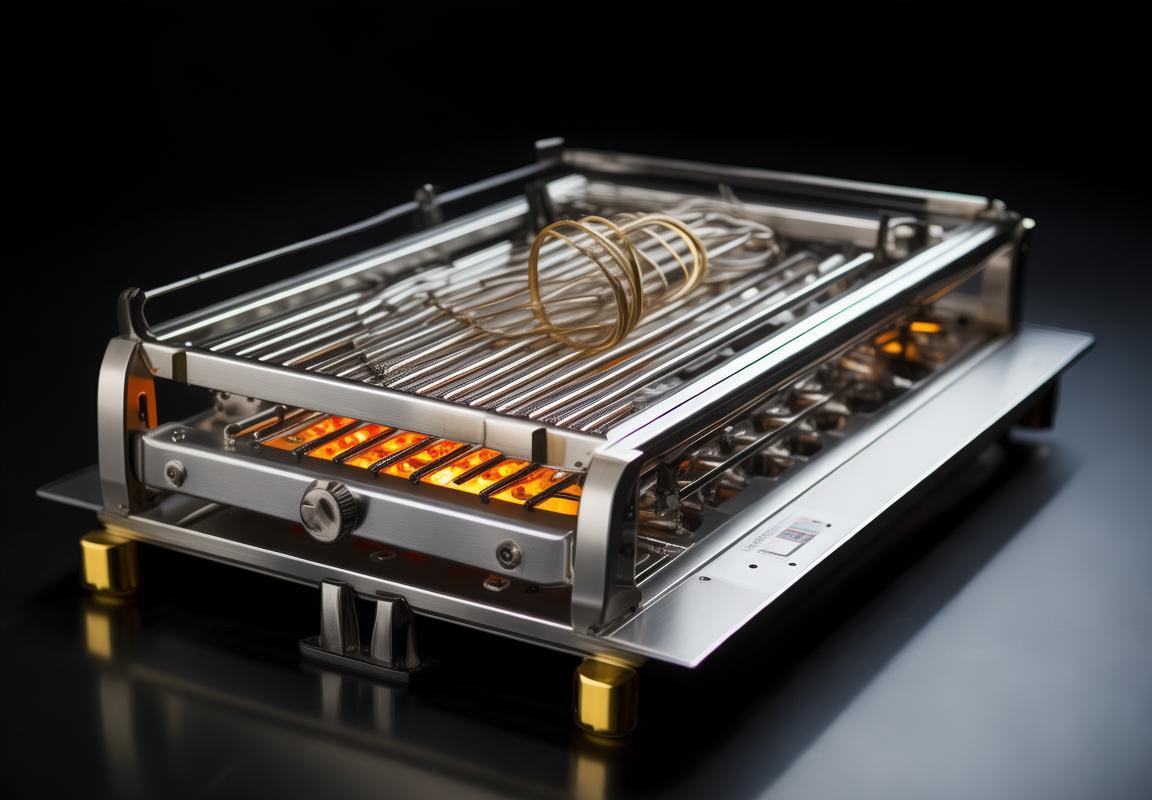
The Benefits of Choosing OEM Contact Grills
OEM contact grills offer a range of advantages for businesses looking to provide high-quality cooking solutions. Here’s an in-depth look at some of the key benefits:
Tailored Customization: One of the standout benefits of opting for OEM contact grills is the level of customization they offer. OEM stands for Original Equipment Manufacturer, meaning these grills are designed and produced to the specifications of the buying company. This allows for branding, features, and design elements to be integrated seamlessly, ensuring the grill aligns perfectly with the brand’s identity and market positioning.
Superior Quality Control: When you choose an OEM contact grill, you’re not just purchasing a product; you’re investing in a manufacturing process that’s been meticulously crafted to ensure the highest quality standards. OEMs often have strict quality control measures in place, resulting in a final product that is reliable, durable, and performs consistently over time.
Efficiency and Performance: OEM contact grills are engineered for optimal performance. They are designed with the latest technologies and materials that enhance cooking efficiency, temperature control, and energy usage. This not only ensures that food is cooked to perfection but also reduces downtime and maintenance requirements, leading to cost savings in the long run.
Cost-Effective Solutions: While OEM products might have a higher upfront cost compared to generic models, they can be a more cost-effective solution in the long term. The quality and longevity of OEM contact grills often mean fewer repairs and replacements, saving money on maintenance and reducing the overall cost of ownership.
Brand Loyalty and Trust: By providing customers with a consistent and high-quality product, businesses can build brand loyalty. When customers are satisfied with the performance and durability of the OEM contact grills, they are more likely to become repeat customers and advocates for the brand. This can lead to increased sales and a positive reputation in the market.
Innovation and Market Edge: Working with an OEM to develop a contact grill gives businesses a competitive edge. OEMs are often at the forefront of innovation, offering cutting-edge features and design improvements that can set a brand apart from its competitors. This can be crucial in a market where differentiation is key to attracting and retaining customers.
Flexibility in Production and Delivery: OEMs typically offer flexible production and delivery schedules. This means that businesses can tailor the production timeline to match their needs, ensuring that they have the grills they need when they need them. Whether it’s for a new product launch, a seasonal surge in demand, or a restock, OEMs can accommodate a variety of production volumes and timelines.
Reduced Supply Chain Complexity: By purchasing OEM contact grills, businesses can streamline their supply chain. Instead of dealing with multiple suppliers for different components, they have a single point of contact for the entire manufacturing process. This simplifies logistics, reduces the risk of parts shortages, and improves overall supply chain efficiency.
Sustainability and Eco-Friendly Options: Many OEMs are increasingly focusing on sustainability. They offer eco-friendly materials and energy-efficient designs, which can be a significant selling point for businesses looking to position themselves as environmentally conscious. This not only appeals to eco-conscious consumers but also helps in compliance with environmental regulations.
After-Sales Support and Service: A reliable OEM partner will provide comprehensive after-sales support. This includes warranty services, technical assistance, and customer service, ensuring that any issues are addressed promptly. This level of support can save businesses time and hassle, allowing them to focus on their core operations.
Market Adaptability: The ability to adapt to market changes is crucial for businesses. OEM contact grills can be customized to meet evolving market demands, whether it’s a shift in consumer preferences, changes in regulations, or the introduction of new cooking techniques. This adaptability ensures that businesses can stay relevant and competitive.
In conclusion, the benefits of choosing OEM contact grills are multifaceted, offering customization, quality, efficiency, cost-effectiveness, and a competitive edge. For businesses looking to elevate their product offerings and maintain a strong market position, investing in OEM contact grills can be a strategic choice that pays off in the long term.

How OEM Contact Grills Differ from Retail Models
OEM contact grills, or Original Equipment Manufacturer grills, stand out in the market for a variety of reasons when compared to retail models. Here’s how they differ:
In terms of customization, OEM contact grills offer a level of personalization that retail models simply cannot match. When you work with an OEM, you have the freedom to specify the exact design, features, and components that you need. This means that the grill can be tailored to meet the specific requirements of your brand or business, ensuring that it aligns perfectly with your product line or service offerings.
Retail models, on the other hand, are mass-produced to appeal to a broad consumer base. While they may offer a range of features, they often lack the ability to be fine-tuned to meet specific needs. An OEM contact grill allows for a more cohesive and branded experience, which can be a significant advantage in a competitive market.
When it comes to quality control, OEM contact grills often outshine retail models. Since they are made by the original manufacturer, these grills benefit from the manufacturer’s quality standards and production processes. This means that each grill is subject to rigorous testing and quality checks before it reaches the customer, ensuring a high level of consistency and reliability.
Retail models, while still well-made, may not undergo the same level of scrutiny due to their mass production nature. This can lead to a wider range of quality variations, with some models performing better than others. With an OEM grill, you can have confidence in the quality and durability of the product, which can be a major selling point for your brand.
The cost structure of OEM contact grills versus retail models can also be quite different. While retail models are designed to be accessible to a wide audience, OEM grills are often more expensive due to the bespoke nature of the product. However, this cost can be justified by the value that the grill brings to your brand.
For instance, a high-quality OEM contact grill can serve as a premium offering in your product line, commanding a higher price point and potentially higher profit margins. Retail models, while affordable, may not have the same perceived value or ability to differentiate your brand from competitors.
Another significant difference is the supply chain. OEM contact grills typically follow a more direct and controlled supply chain, which can lead to shorter lead times and more reliable delivery schedules. This is particularly important for businesses that require consistent inventory levels or have tight production timelines.
Retail models, on the other hand, often come with longer lead times due to the complexities of distribution and inventory management. By choosing an OEM contact grill, you can often benefit from a more streamlined process that can help you meet your business goals more efficiently.
Customization also extends to the branding aspect. OEM contact grills can be designed to reflect your brand’s colors, logos, and overall aesthetic. This level of branding integration is not always possible with retail models, which are often sold under the brand name of the retailer or distributor.
From a technical standpoint, OEM contact grills can be engineered with specific functionalities that retail models might not offer. This could include advanced heating elements, unique cooking surfaces, or even smart features like temperature control systems. These enhancements not only improve the user experience but can also make your product stand out in a crowded marketplace.
Service and support are another area where OEM contact grills can provide an edge. Since they are produced by the original manufacturer, there is often a stronger commitment to after-sales service. This means that customers who purchase an OEM contact grill can expect a higher level of support and assistance should any issues arise.
Lastly, the longevity of OEM contact grills can be superior to retail models. The use of higher-quality materials and components in the manufacturing process means that these grills are built to last, reducing the need for frequent replacements and enhancing customer satisfaction.
In summary, the differences between OEM contact grills and retail models are significant, ranging from customization and quality control to cost, supply chain, branding, technical specifications, and service. For businesses looking to differentiate their products and create a unique value proposition, investing in an OEM contact grill can be a strategic move that pays off in the long run.

The Process of Working with a Contact Grill OEM
Navigating the world of contact grill OEMs can be a game-changer for businesses looking to enter or expand in the market. Here’s a closer look at the intricate process of working with an OEM to bring your contact grill ideas to life.
Understanding the CollaborationWhen you collaborate with a contact grill OEM, you’re essentially entering into a partnership. This means aligning your brand’s vision with the OEM’s expertise and manufacturing capabilities. The process begins with a clear understanding of what you want to achieve—whether it’s to create a new product, improve upon an existing one, or simply outsource the manufacturing process.
Customization and DesignOne of the key advantages of working with an OEM is the level of customization you can achieve. Unlike retail models that are mass-produced and often have limited design options, OEMs can tailor the contact grill to your exact specifications. This could include anything from the size and shape of the grill plates to the material used in the construction and the features integrated into the design.
Quality Control and StandardsA significant aspect of working with an OEM is the assurance of quality control and adherence to high manufacturing standards. OEMs are typically equipped with the latest technology and skilled labor to ensure that each contact grill meets the highest quality benchmarks. This means rigorous testing and quality checks throughout the production process to guarantee that the final product is reliable and durable.
Supply Chain ManagementOne of the challenges in manufacturing can be the management of the supply chain. When working with an OEM, they often handle this aspect, from sourcing raw materials to coordinating logistics. This can save your business time and resources, as the OEM has established relationships with suppliers and distributors, ensuring a smooth and efficient flow of goods.
Flexibility in ProductionAnother benefit of partnering with an OEM is the flexibility in production. Whether you need a small batch for testing or a large-scale production run, OEMs can accommodate various volumes. This flexibility is particularly important for businesses that are looking to test new markets or introduce seasonal products.
Intellectual Property ProtectionWhen you work with an OEM, you’re not just collaborating on the production of a contact grill; you’re also protecting your intellectual property. OEMs are usually bound by confidentiality agreements, ensuring that your designs, prototypes, and technical specifications remain secure and confidential.
Innovation and DevelopmentAn OEM can also be a source of innovation. They often have in-house design teams or partnerships with external engineers who can suggest improvements or entirely new concepts for your contact grill. This can lead to a more competitive product that stands out in the market.
Pricing and Cost EfficiencyPricing is a critical factor for any business, and working with an OEM can offer cost efficiencies. Since OEMs produce a wide range of products, they can leverage economies of scale in purchasing materials and in the manufacturing process. This often results in more competitive pricing for you, the client.
Ongoing Support and ServiceA good OEM will offer ongoing support and service beyond the initial production run. This includes technical assistance, maintenance, and sometimes even product upgrades. This support is crucial for ensuring that your contact grill remains a reliable and attractive option for consumers over time.
Communication and CollaborationEffective communication is the backbone of any successful partnership. When working with an OEM, maintaining open and clear lines of communication is essential. Regular updates, feedback sessions, and the ability to make adjustments throughout the process are all part of a collaborative approach that leads to a product that aligns with your brand’s goals.
ConclusionThe process of working with a contact grill OEM is a multifaceted journey that involves design, production, quality control, and ongoing support. It’s a partnership that can lead to the creation of a unique product that meets the demands of the market while also providing your business with the flexibility and quality assurance needed to succeed. By understanding the nuances of this process, you can make informed decisions that drive your brand forward in the competitive world of contact grills.
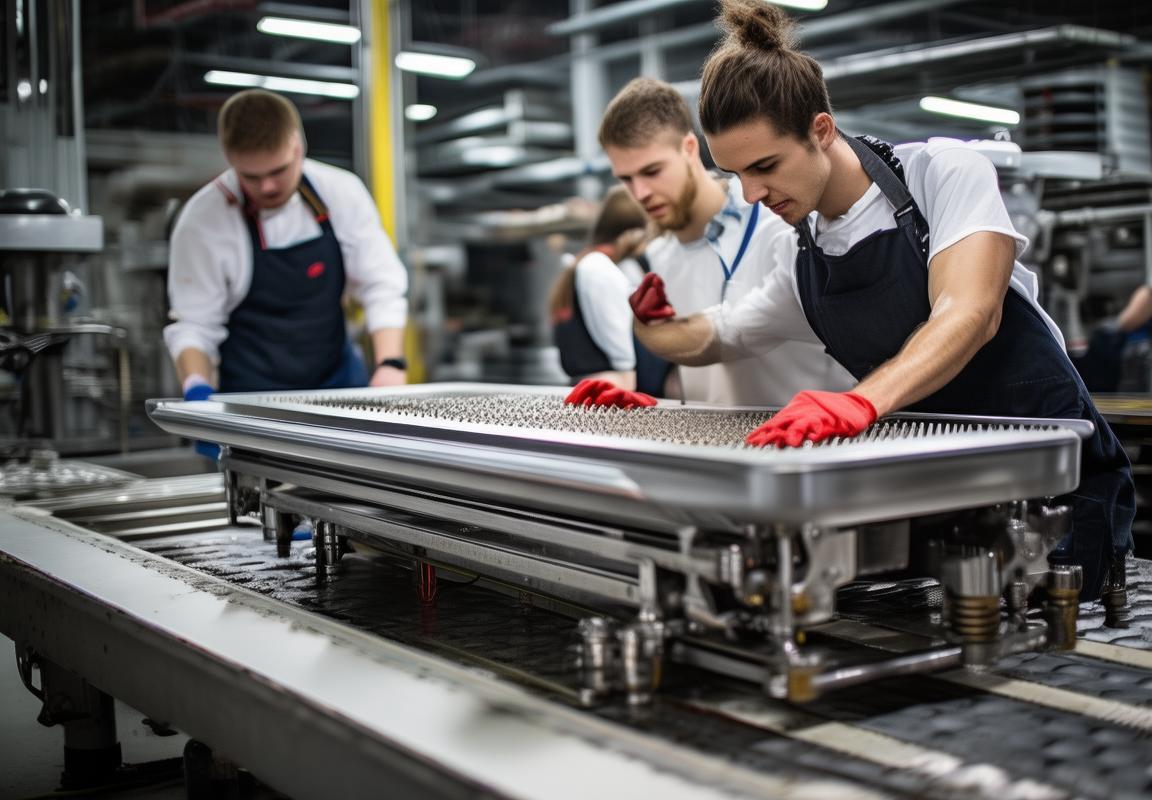
Finding the Right OEM Partner for Your Business Needs
Navigating the sea of OEM partners can be a daunting task, especially when your business needs are specific and unique. Here’s how to sift through the options and find the right OEM partner for your business:
Understanding Your Specific RequirementsBefore diving into the search for an OEM partner, it’s crucial to have a clear understanding of what your business needs. This includes the type of contact grill you’re looking for, the desired features, quality standards, and any specific design elements that are crucial for your brand. Whether it’s a compact model for portable use or a high-capacity grill for commercial kitchens, knowing your needs sets the foundation for a successful partnership.
Researching Potential OEMsOnce you’ve defined your requirements, the next step is to research potential OEM partners. This involves looking for companies that specialize in manufacturing contact grills and have a track record of producing high-quality products. Utilize industry directories, trade shows, and online searches to compile a list of potential candidates. Look for testimonials, case studies, and reviews from other businesses that have worked with these OEMs.
Evaluating Quality and ReliabilityQuality and reliability are paramount when selecting an OEM partner. Check the OEM’s manufacturing processes, quality control measures, and certifications to ensure they meet industry standards. A reputable OEM will have robust quality assurance protocols in place, from raw material inspection to final product testing. Don’t hesitate to ask for samples or visit their facility to get a firsthand look at their operations.
Assessing Customization CapabilitiesOne of the key advantages of working with an OEM is the ability to customize products to fit your brand and customer expectations. Evaluate the OEM’s ability to tailor their products to your specifications. This includes not only the physical design but also the functionality, materials, and branding. A good OEM should be able to offer a range of customization options without compromising on quality.
Considering Communication and CollaborationEffective communication is the backbone of any successful partnership. Look for an OEM that values open and transparent communication. They should be responsive to your inquiries, provide regular updates on the production process, and be willing to collaborate on design changes or other modifications. A strong working relationship built on trust and clear communication can lead to a more tailored and efficient product development process.
Reviewing Pricing and Cost EfficiencyWhile quality is crucial, so is cost efficiency. Compare the pricing structures of different OEM partners to ensure you’re getting the best value for your investment. Be wary of quotes that seem too good to be true, as they may indicate lower quality materials or subpar manufacturing processes. A reputable OEM will offer competitive pricing without cutting corners on quality.
Understanding Logistics and Supply ChainThe logistics of working with an OEM are just as important as the manufacturing and design aspects. Consider the OEM’s location, their supply chain capabilities, and their ability to meet your production timelines. A well-established OEM will have a streamlined supply chain that can handle large orders and ensure timely delivery. This is particularly important if you’re looking to scale your business or enter new markets.
Assessing Long-Term PotentialWhen choosing an OEM partner, think about the long-term potential of the relationship. Will this OEM be able to support your business as it grows? Look for partners who are invested in long-term relationships and are willing to adapt to your evolving needs. A good OEM should be able to scale their production with you, ensuring a consistent supply of high-quality products.
Seeking References and TestimonialsDon’t hesitate to ask for references and testimonials from past clients. Speaking with other businesses that have worked with the OEM can provide valuable insights into their working style, quality of products, and customer service. These real-world experiences can help you make a more informed decision and ensure that the OEM is a good fit for your business.
By carefully considering these factors, you can find an OEM partner that aligns with your business needs and goals. Remember, the right OEM can be a valuable asset, helping you bring innovative and high-quality contact grills to market while strengthening your brand’s presence in the competitive marketplace.

Case Studies: Success Stories with Contact Grill OEMs
In the world of contact grills, OEM partnerships have become a cornerstone for many businesses looking to innovate, streamline production, and meet consumer demands. Here are some success stories that highlight the benefits of such collaborations:
Innovative Design IntegrationA small startup, known for its eco-friendly kitchen appliances, partnered with a contact grill OEM to develop a model that combined the latest in energy-efficient technology with the traditional design of a contact grill. The OEM’s expertise in materials and manufacturing allowed the startup to bring a product to market that was not only stylish but also reduced energy consumption by 30%. The innovative design was a hit with eco-conscious consumers, leading to a significant boost in sales and brand recognition.
Customization for Specialized MarketsA large outdoor equipment retailer sought an OEM partner to create a line of contact grills tailored for the camping and hiking community. The OEM, with its background in portable and durable cooking solutions, designed a compact, lightweight grill that could be easily packed and used in various outdoor settings. The result was a product line that became a staple for outdoor enthusiasts, enhancing the retailer’s reputation for providing top-notch gear.
Quality Control and EfficiencyA mid-sized manufacturer of kitchen appliances faced challenges in maintaining consistent quality across its product lines. By partnering with a reputable contact grill OEM, they were able to leverage the OEM’s rigorous quality control processes. The OEM’s state-of-the-art facilities ensured that every grill met the highest standards, and the manufacturer’s production line efficiency improved significantly. This partnership led to a reduction in defects and an increase in customer satisfaction.
Global ExpansionA well-established brand in the culinary equipment industry aimed to expand into new international markets. They partnered with a global contact grill OEM to adapt their products to local tastes and regulations. The OEM’s network of suppliers and manufacturing facilities in various regions allowed the brand to enter new markets with a product that was not only compliant with local standards but also appealing to local consumers. This strategic move resulted in a substantial increase in international sales and market share.
Cost Reduction and ScalabilityA small business that specialized in gourmet food trucks was looking to expand its menu offerings without increasing overhead costs. By working with a contact grill OEM, they were able to develop a custom-designed grill that was cost-effective to produce. The OEM’s ability to scale production quickly meant that the business could meet the growing demand for their food truck services without the need for significant capital investment. This allowed the company to offer a wider variety of gourmet dishes and attract a larger customer base.
Brand DifferentiationA company that focused on premium kitchenware sought to differentiate its brand by offering a unique contact grill. They collaborated with an OEM that specialized in high-end appliances to create a grill that combined advanced cooking technology with sleek aesthetics. The OEM’s ability to source high-quality materials and incorporate cutting-edge features allowed the company to launch a product that positioned them as a premium brand in the market. The success of this collaboration was reflected in the premium pricing and the loyal customer following.
Sustainability and Social ResponsibilityAn emerging brand with a strong commitment to sustainability turned to an OEM that shared their values. Together, they designed a contact grill made from recycled materials and with an emphasis on reducing the carbon footprint during production. The OEM’s commitment to green manufacturing processes ensured that the final product was eco-friendly. This initiative not only helped the brand attract environmentally conscious consumers but also won them awards and recognition for their social responsibility efforts.
These case studies illustrate the diverse ways in which contact grill OEM partnerships can lead to success. From design innovation to market expansion and sustainability, the right OEM partner can be a key driver in achieving business goals and staying ahead in a competitive market.
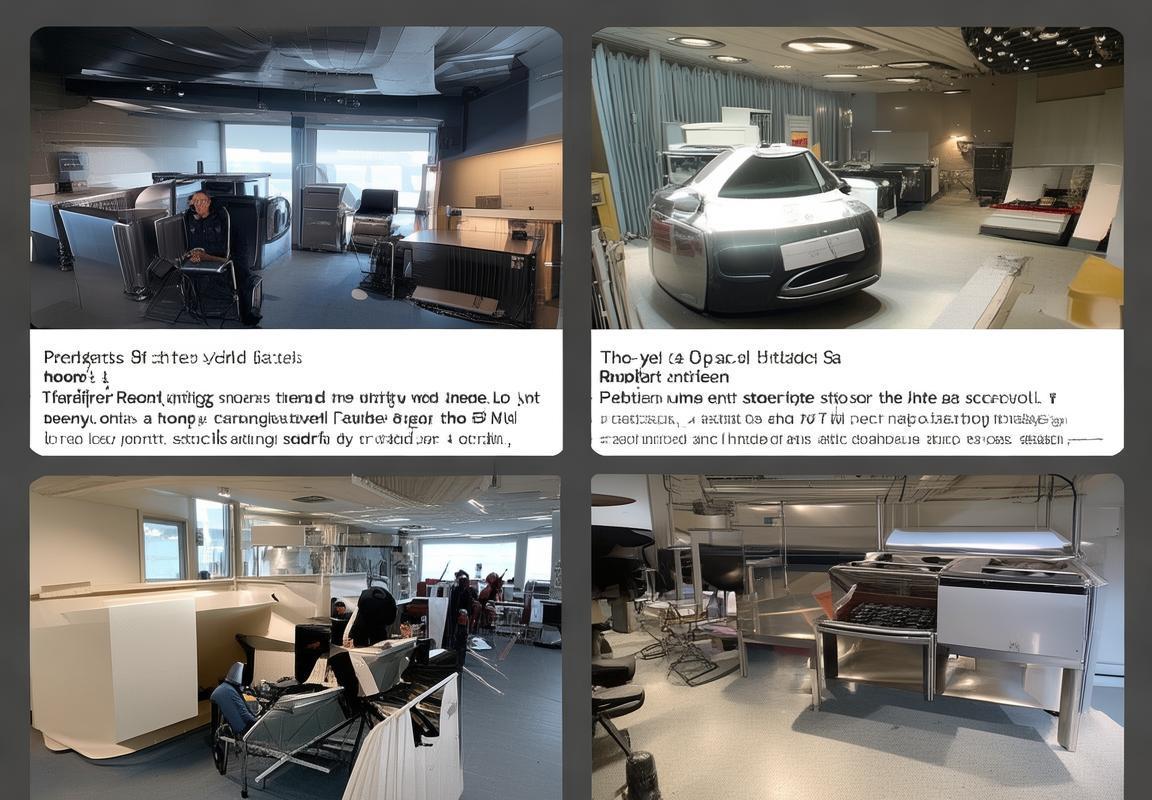
The Future of Contact Grill OEMs: Trends and Innovations
In the ever-evolving world of kitchen appliances, contact grill OEMs are at the forefront of innovation, driving the industry forward with cutting-edge technologies and designs. As we look to the future, several trends and innovations are shaping the landscape of contact grill OEMs, promising a new era of convenience, efficiency, and culinary possibilities.
-
Smart Technology IntegrationThe future of contact grill OEMs is undeniably intertwined with the rise of smart technology. Grills that can be controlled via smartphone apps are not just a luxury; they are becoming a necessity. These smart grills can adjust temperatures, monitor cooking times, and even provide recipes and cooking tips, making them a valuable asset for both professional chefs and home cooks.
-
Energy Efficiency and SustainabilityWith growing concerns about climate change and energy consumption, contact grill OEMs are focusing on developing more energy-efficient models. This includes the use of advanced heat distribution systems that minimize energy waste and reduce cooking times. Additionally, eco-friendly materials are being used in the construction of these grills, contributing to a more sustainable future.
-
Customization and PersonalizationOEMs are recognizing the importance of customization and personalization in the contact grill market. Grills that can be tailored to individual preferences, whether it’s through adjustable heat settings, interchangeable grill plates, or unique cooking patterns, are becoming increasingly popular. This allows users to create their perfect grilling experience, whether they’re a barbecue enthusiast or a professional chef.
-
Enhanced Cooking TechnologiesThe future holds promise for contact grills that go beyond the traditional flat-top grilling experience. Innovations such as 3D grilling, which allows for multi-level cooking, are on the horizon. These advanced grills could offer more even cooking and increased versatility, allowing users to grill, smoke, and bake simultaneously.
-
Safety and Accessibility FeaturesSafety is a top priority for contact grill OEMs, and the industry is continuously working to improve the safety features of these appliances. From easy-to-use controls that prevent accidental burns to anti-lockout mechanisms that ensure the grill cools down when not in use, the future of contact grills will be safer for all users. Accessibility features, such as voice control and touchless operation, are also being developed to cater to a wider range of users.
-
Health and Wellness FocusAs the health and wellness movement gains momentum, contact grill OEMs are responding with products that make it easier to cook healthier meals at home. Grills with non-stick surfaces that reduce the need for excessive oil, as well as models that offer steaming and sautéing capabilities, are becoming more common. These features allow for healthier cooking methods that are still convenient and enjoyable.
-
Global Market ExpansionContact grill OEMs are not confined to local markets; they are looking to expand globally. This expansion is driven by the growing demand for outdoor cooking in regions like Asia and South America. As OEMs adapt their products to meet the specific needs and preferences of these markets, they are creating new opportunities for growth and innovation.
-
Collaborations and PartnershipsTo stay ahead in the competitive landscape, contact grill OEMs are forming strategic collaborations and partnerships. These alliances can range from joint research and development efforts with food technology companies to marketing collaborations with culinary influencers. These partnerships can lead to the creation of unique products and services that resonate with consumers.
-
The Rise of Subscription ModelsSubscription-based services are becoming a popular business model in many industries, and the contact grill OEM market is no exception. By offering a subscription service, OEMs can provide customers with regular updates to their grills, ensuring they always have the latest features and technologies. This model can also offer a steady revenue stream for OEMs.
-
Continuous Improvement and AdaptationIn the fast-paced world of technology and consumer preferences, contact grill OEMs must be prepared to continuously improve and adapt their products. This means staying abreast of emerging trends, listening to customer feedback, and being willing to pivot when necessary. The ability to innovate and evolve will be crucial for OEMs looking to thrive in the future.
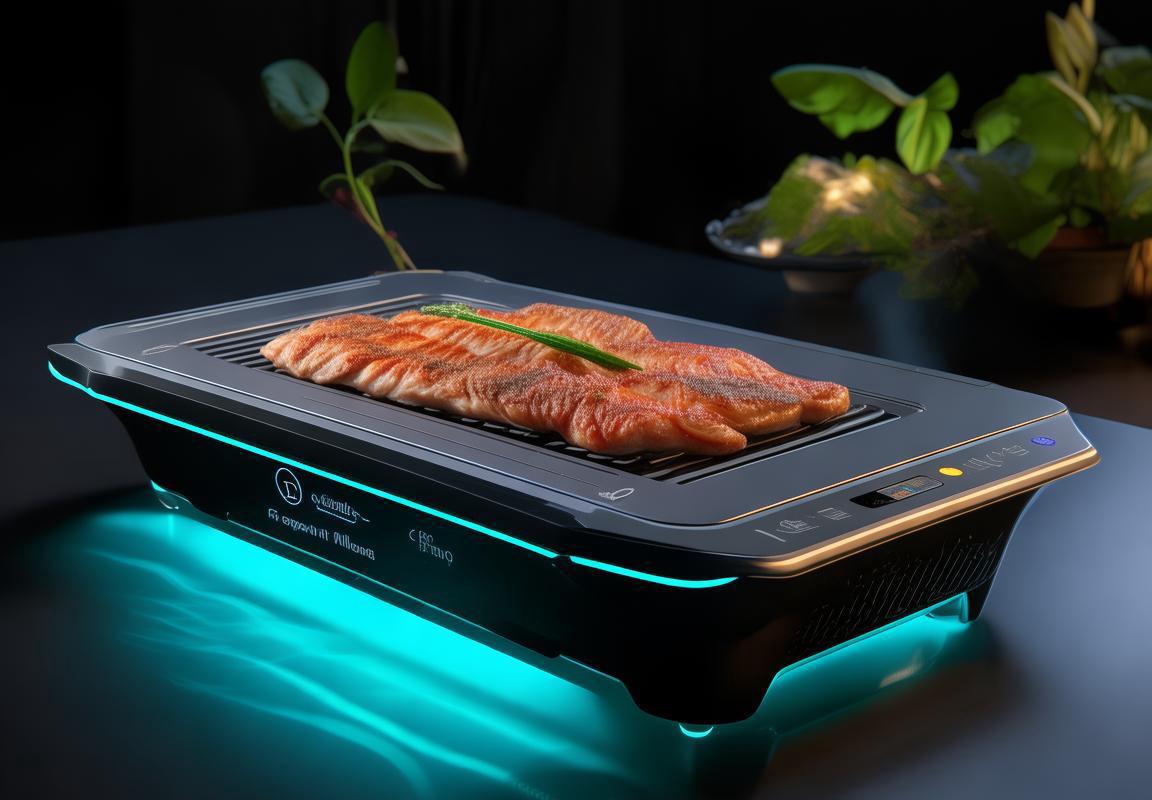
Final Thoughts: Why Investing in Contact Grill OEMs Could Be a Game-Changer
Investing in Contact Grill OEMs can be a transformative move for businesses looking to capitalize on the growing demand for outdoor cooking solutions. Here’s why this choice could be a game-changer:
In the competitive landscape of outdoor cooking equipment, the ability to offer unique, high-quality contact grills can set a brand apart. OEMs (Original Equipment Manufacturers) provide the opportunity to customize and enhance products to meet specific market needs, ensuring that your brand stands out in a crowded marketplace.
Customization is key when it comes to contact grills. OEMs can tailor the design, features, and performance of the grills to align with your brand’s identity and customer preferences. This level of personalization can lead to a more cohesive product line that resonates with consumers, fostering brand loyalty and repeat business.
The cost-effectiveness of working with an OEM cannot be overstated. By partnering with an OEM, businesses can benefit from economies of scale, reducing production costs and passing those savings on to the consumer. This cost advantage can be a significant draw for both retailers and end-users, making your products more accessible and competitive.
Quality control is another area where OEMs shine. These manufacturers are often dedicated to producing the highest quality products, which can be a major selling point for your brand. By associating your name with an OEM’s reputation for excellence, you can build trust with your customers and ensure that your products consistently meet or exceed expectations.
Innovation is a driving force in the contact grill market. OEMs are at the forefront of technological advancements, constantly seeking new ways to improve their products. By investing in an OEM, you gain access to cutting-edge designs and features that can give your brand a competitive edge and keep you ahead of the curve.
The flexibility offered by OEMs is invaluable. They can adapt to changing market trends and customer demands, allowing your business to stay relevant and competitive. Whether it’s a shift in consumer preferences or the introduction of new materials and technologies, OEMs can quickly adjust to ensure your products remain in demand.
Sustainability is a growing concern for consumers and businesses alike. OEMs are increasingly focusing on eco-friendly manufacturing processes and materials, which can enhance your brand’s image and appeal to environmentally conscious customers. By aligning with an OEM that prioritizes sustainability, you can contribute to a positive environmental impact while also appealing to a broader market.
The global reach of OEMs is another advantage. Many OEMs have established networks and supply chains that can extend your brand’s reach into new markets and demographics. This international presence can open doors to new customers and opportunities, expanding your business’s horizons.
Marketing and branding are simplified when you work with an OEM. These manufacturers often have a deep understanding of the market and can provide valuable insights for product positioning and marketing strategies. Leveraging their expertise can help you create compelling marketing campaigns that resonate with your target audience.
Customer service and support are integral to the success of any product. OEMs typically offer robust customer service programs, including warranties and after-sales support. By partnering with an OEM, you can ensure that your customers receive the highest level of care, which can lead to positive reviews and word-of-mouth referrals.
Innovation in the contact grill market is not just about new features; it’s also about user experience. OEMs are constantly looking for ways to make grilling more enjoyable and accessible, whether through intuitive interfaces, improved safety features, or enhanced usability. By investing in an OEM, you’re investing in a better user experience, which can translate into higher customer satisfaction and retention.
The scalability of OEM partnerships is a significant benefit for businesses of all sizes. Whether you’re a small startup or a large corporation, OEMs can accommodate your production needs, scaling up or down as your business grows. This flexibility allows you to manage inventory levels effectively and respond to market fluctuations without the constraints of in-house manufacturing.
Lastly, the collaborative nature of working with an OEM can lead to unexpected synergies. By pooling resources and expertise, both parties can create something greater than the sum of their parts. This collaborative approach can drive innovation and create a unique value proposition that can be difficult to replicate by competitors.
In conclusion, investing in Contact Grill OEMs can be a game-changer for businesses looking to innovate, differentiate, and grow. From customization and cost savings to quality control and global reach, the benefits are clear. By aligning with the right OEM partner, businesses can position themselves for success in the dynamic and evolving outdoor cooking equipment market.